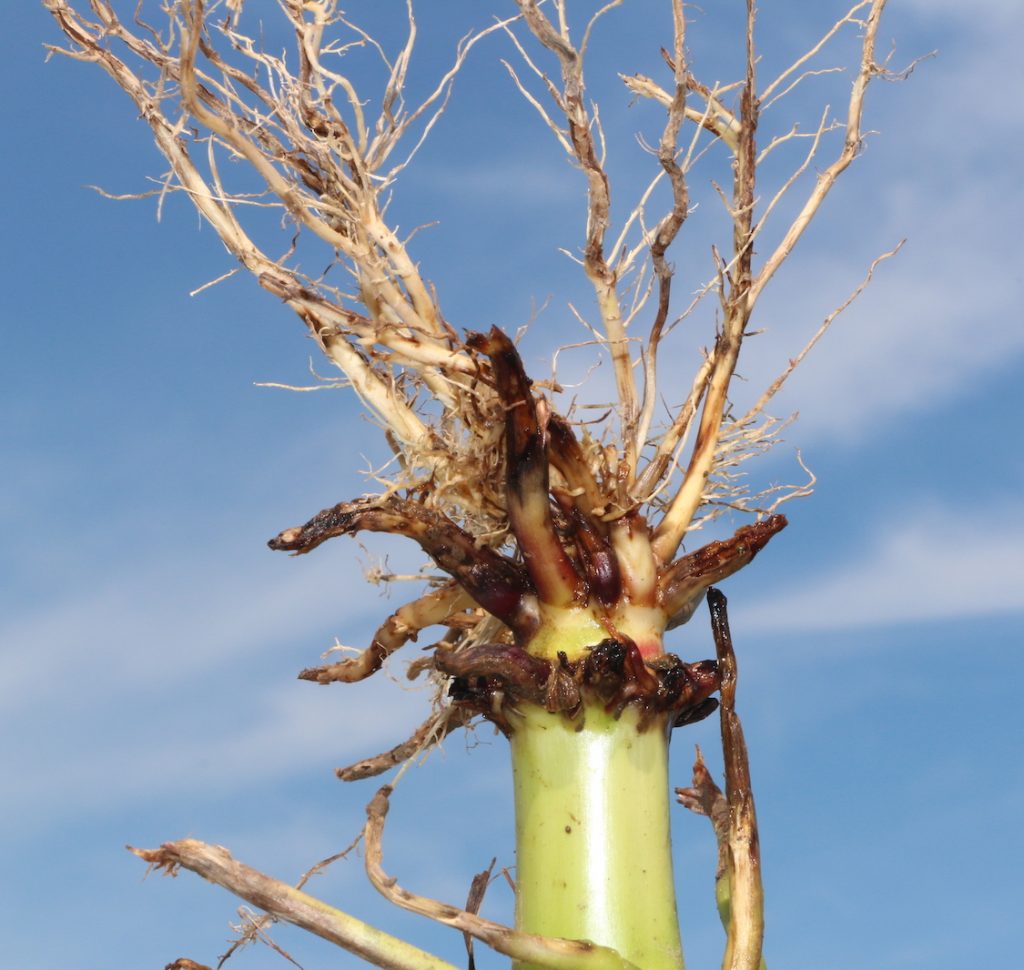Bryan Jensen, Department of Entomology and Division of Extension, UW-Madison
Grab the shovel and start the power washer. Now is the perfect time to learn how well your corn rootworm management practice worked. Most of the larvae have finished feeding and (hopefully) roots haven’t started to regenerate too fast. Although that may change if we get some rain.
You can gain a lot of knowledge from digging roots in both continuous corn as well as first year corn. Let’ talk about the potential for first year corn first. There are two situations where corn rootworms have caused damage to first year corn in the Midwest. The western corn rootworm had lost some of its fidelity to corn and has deposited eggs in soybeans in some areas of the Midwest. This happened in SE Wisconsin during the early to mid-2000’s. However, during the last decade this phenomenon has not been an issue. Will it again? Possibility, but no one can predict if or when. The second scenario is extended diapause of the Northern corn rootworm. To be clear, this has not been reported in Wisconsin but has been an issue in areas of Minnesota, Iowa, and a few other states. Diapause can be loosely defined as suspended development. Some insects use it to escape adverse environments. For rootworms, the eggs enter diapause to survive the winter and the larvae won’t hatch until the following spring when a food source (corn roots) is available. For the Northern corn rootworm, a segment of their population has selected for a trait that requires two winter chill periods before hatching. In a corn/soybean rotation this can be an excellent survival tactic that ensures the eggs don’t hatch during the soybean year but hatch the following year when corn roots are available.
Monitoring root feeding in first year corn can give us the confidence that we don’t have to treat first year corn. Or, perhaps one day, give us advance warning of damage in the first year.

I do think monitoring root feeding in continuous corn is well worth your time. It gives you information on how well your control did or did not work. Don’t assume standing corn doesn’t have significant rootworm damage. Likewise, don’t assume lodged corn is a result of rootworm feeding. Root monitoring also gives you advanced notice of Bt trait failures. Bt resistance doesn’t happen overnight. Rather, you should see a progression of damage over a few years before you have an observable failure. If using a pyramid, be concerned about resistance if you have damage over 0.5 on the Iowa State Nodal Injury Scale (NIS). If using a single trait hybrid then a NIS rating > 1.0 should be concerning.
An estimate of economic injury can be difficult to determine because many factors can contribute to injury loss and can include compaction, diseases, hybrid, rainfall, etc. A ballpark estimate for economic injury is a rating below 0.25 should not cause economic loss. A rating above 0.75 likely will have economic loss. A root rating average between 0.25 and 0.75 is a gray area and economic loss may be dependent on additional stresses.
For more information on rating corn roots for damage please view this resource, Evaluating Corn Roots for Rootworm Damage.